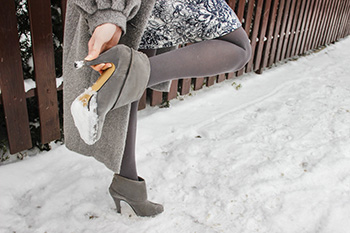
It is tempting to overlook your feet during the winter months as they are nestled away in boots and socks. However, neglecting foot care during winter can lead to various issues, from cracked skin to fungal toenail infections. To ensure your feet stay happy and healthy, start by choosing appropriate winter footwear that provides warmth without compromising circulation. It helps to steer clear of non-breathable materials to control foot sweat. Equally important is the selection of breathable socks, such as wool, to keep feet warm and dry, preventing over-saturation. Promptly remove wet shoes and socks to avoid fungal and bacterial infections, ensuring thorough drying before reuse. Combat the drying effects of winter air and heaters by regularly applying a high-quality foot cream to prevent corns, calluses, and cracked heels. Consider giving your toenails a break from polish during winter to allow better absorption of moisturizing creams and deter nail dryness, especially if your usual lacquers contain yellowing agents. If you have developed heel fissures or fungal toenail infections during the winter, it is suggested that you schedule an appointment with a chiropodist for treatment.
The winter months can bring about new or worsening foot and ankle problems. If you’re suffering from foot or ankle pain, please consult with one of the chiropodists from Complete Family Footcare & Therapy. Our clinicians can help you maintain the health of your lower limbs and your mobility.
Winter Foot Problems
-
Cracked heels - Dry, cracked skin on the heels of the feet that is associated with cold, dry weather
-
Athlete’s foot - A fungal infection on the skin of the feet
-
Blisters - Fluid-filled bubbles of skin that usually form in response to friction
-
Fractures - Broken bones in the feet or ankles
-
Metatarsalgia - General foot pain
-
Chilblains - Spasming of the small blood vessels in the toes in response to exposure to cold weather
-
Raynaud’s disease - Numbness, pain, and color changes in the toes due to cold weather
Prevention
-
Wear warm socks and shoes
-
Avoid prolonged exposure to the cold
-
Moisturize the heels regularly
-
Keep your feet clean and dry
-
Walk carefully in areas that may be icy
-
Wear non-slip shoes
If you have any questions, please feel free to contact our offices located in . We offer the newest diagnostic and treatment technologies for all your foot care needs.
